nn
n
n If you have ever visited central London, there isnevery chance that you will have walked along the street called Pall Mall, whichnruns through St James’s, parallel to the Mall, and extends, as Pall Mall East,nas far as Trafalgar Square.
n
n
n
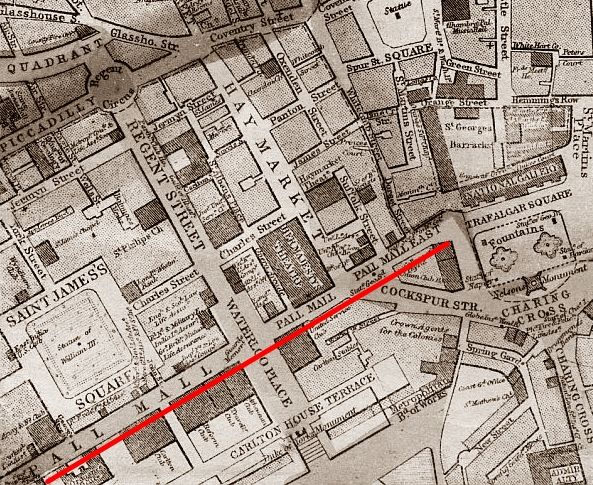 |
| Pall Mall, London |
n
n
n
nThe name, Pall Mall, derives from a gamenthat was popular in England during the seventeenth century. This game wasnintroduced from France, where it was called paille-maille, andnoriginated in Italy, where it was called pallamaglio, coming from thenLatin pila – ball and malleus – hammer.
n
n
n
 |
| Games with the Ball |
n
n
n
nBall and mallet gamesnhave a long history – in ancient Rome there was a game called paganica,nwhere a leather ball stuffed with feathers was struck with a stick, and innEngland during the reign of Edward III, cambuca was played, this wasnalso called bandy ball, on account of the bandy, or bent,nstick. In one incarnation, this game developed into golf, or goff as itnwas sometimes called, and another variation became pall mall.
n
n
n
 |
| Pall Mall |
n
n
n
nIn his LatinnDictionary (1735), Adam Littleton gives the definition of paganicanas ‘a goff ball, a stow ball, stuffed with feathers’, stow ball was ansimilar sort of game to golf.
n
n
n
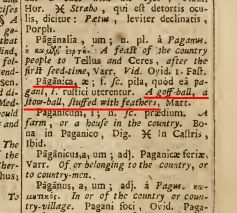 |
| Adam Littleton – Paganica – Latin Dictionary – 1735 |
n
n
n
nAn alternative etymology posits that the namencomes from pale-mail, French for straw-mallet, as the targetnhoops were made from twisted or plaited straw, although ball-malletnmakes much more sense.
n
n
n
 |
| Jeu de Mail – Fifteenth Century |
n
n
n
nJeu de mail (mallet-game) was played in France innthe fifteenth century, as were other kinds of ground billiards, and continuednwell into the twentieth century; jeu de palme (hand-game) eventuallyndeveloped into tennis, and such sports as cricket and lacrosse were laternversions of these stick and ball games.
n
n
n
 |
| Jeu de Mail – France 1895 |
n
n
n
nThe earliest mention of the game isnmade in Method for Travel (1598), by Sir Robert Dallington,
n
n
n
n“Amongnall the exercises of France, I prefer none before the Paille Maille, bothnbecause it is a gentlemanlike sport, not violent, and yields good occasion andnopportunity of discourse as they walke from one marke to the other.”n
n
n
nThenenthusiasm for ‘gentlemanly’ sports is also seen in the Basilikon Doron (RoyalnGift), written by James I as advice for his eldest son, Prince Henryn(born 1594),
n
n
n
n“But the exercises that I would have you to use (although butnmoderately, not making a craft of them) are running, leaping, wrastling,nfencing, dancing, and playing at the caitch or tennise, archery, palle maille,nand such like other faire and pleasant field games.”n
n
n
n
n
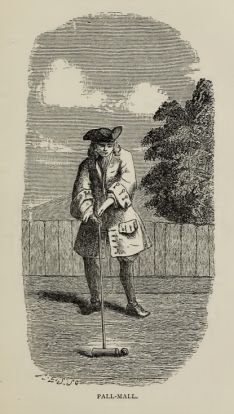 |
| Pall Mall |
n
n
n
nIt seems that thenPrince followed this fatherly advice, for a later anecdote records,
n
n
n
n“Atnanother time playing at goff, a play not unlike to pale-maille, whilst hisnschoolmaster stood talking with another, and marked not his highness warningnhim to stand farther off, the prince thinking he had gone aside, lifted up hisngoff-club to strike the ball.”n
n
n
n
n
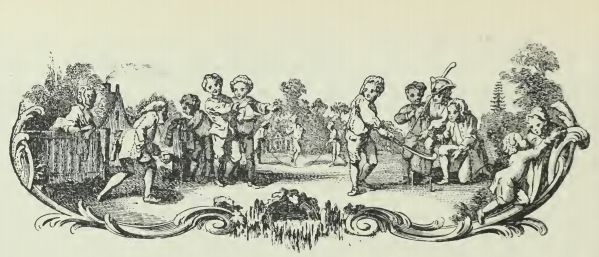 |
| Games with a stick |
n
n
n
nNot long after, the younger Henry Peacham,nin the Compleat Gentleman (1622), describes the habits of the French,
n
n
n
n“Theirnexercifes are for the molt part Tennife play, Pallemaille, fhooting in thenCroffe-bow or Peece, and Dancing,”n
n
n
nThe same author, in The Worth of anPenny (1644), describes the beneficial pleasures of the body as,
n
n
n
n“Walking,nriding upon pleasure, hunting, hawking, bowling, ringing, Paile Maille or PellnMell, and the like which are recreations without doors [i.e. outdoors].n
n
n
n
n
 |
| Pall Mall Mallet and Ball |
n
n
n
nOnnApril 2nd 1661, Samuel Pepys wrote in his Diary that,
n
n
n
n“So I intonSt. James’s Park, where I saw the Duke of York playing at Pelemele, the firstntime that ever I saw the sport.”n
n
n
n
n
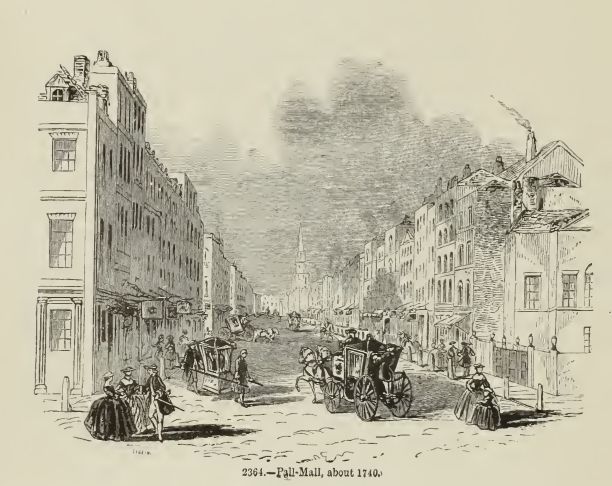 |
| Pall Mall circa 1740 |
n
n
n
nThis Duke of York would become King JamesnII, after the death of his brother, King Charles II, who was also extremelynfond of playing Pall Mall. The poet, Edmund Waller, wrote about the King’snexpertise in the game in his On St James’s Park,
n
n
n
n“Here, a well-polished Mallngives us the joyn
nTo see our Prince his matchless force employ;n
nHis manlynposture, and his graceful mien,n
nVigour and youth, in all his motions seen;n
nHisnshape so lovely, and his limbs so strong,n
nConfirm our hopes we shall obey himnlong.n
nNo sooner has he touched the flying ball,n
nBut ’tis already more than halfnthe Mall;n
nAnd such a fury from his arm has got,n
nAs from a smoking culverinn’twere shot.”n
n
n
n
n
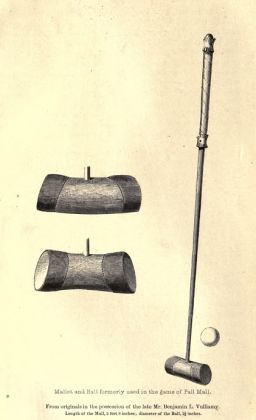 |
| Pall Mall Mallet |
n
n
n
nPall Mall was played with a mallet, its head bound with ironnhoops, and a box-wood ball that was struck down a course and then through ansuspended hoop, the winner either taking the fewest strokes or managing thenfeat in a pre-determined number of strokes (similar to par in golf).
n
n
n
 |
| The Game of Pall Mall |
n
n
n
nThentarget hoops were positioned at either end of the straight alley, or field, andnplay would continue from one end and back to the other, for a given number ofntimes. The alley itself was contained by boards, to prevent the ball fromnrunning off and to prevent onlookers encroaching onto the playing area, and wasncovered in powdered cockleshells, pressed firmly into the ground (the ‘well-polishednMall’ mentioned by Waller).
n
n
n
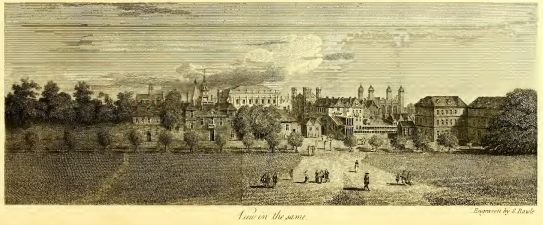 |
| Playing Pall Mall at St James’s |
n
n
n
nPepys in his Diary, May 15, 1663, writes,
n
n
n
n“Inwalked in the Park, discoursing with the keeper of the Pell Mell, who wasnsweeping of it, who told me of what the earth is mixed that do floor the Mall,nand that over all there is cockle-shells powdered, and spread to keep it fast;nwhich, however, in dry weather turns to dust and deadens the ball.”n
n
n
n
n
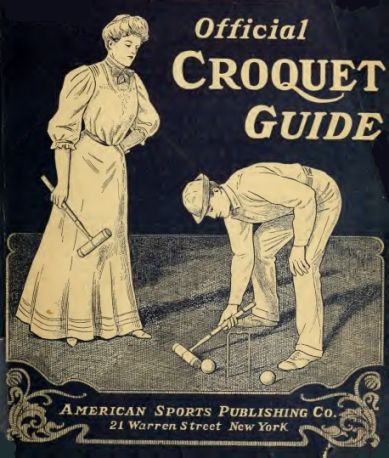 |
| Offical Croquet Guide |
n
n
n
nEventually, Pall Mall fell out of favour and the game developed into croquet,nstill played widely today. The word ‘mall‘ meaning a long, straight thoroughfare has since come to mean a shopping street, notably in the ‘shopping malls‘ in the U.S.A.
n
n
n
 |
| A Rover – Croquet Principles and Rules – 1874 |
n
n
n
nOddly, the expression ‘pell mell’, meaningndisorder or confusion, does not come from the rushing after the ball during angame of Pall Mall, but from the Old French pesle-mesle, a twelfthncentury term meaning a mixture or mingling, possibly a rhyming constructionnbased on a word for a frying pan or a shovel.
nnn
n
nnn
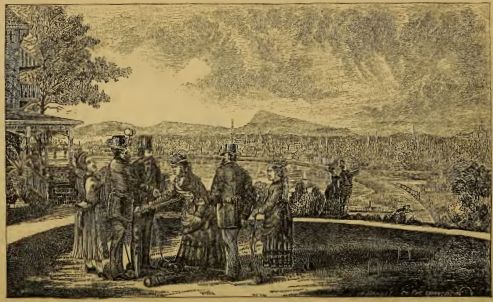 |
| A Croquet Party |
n
n

















